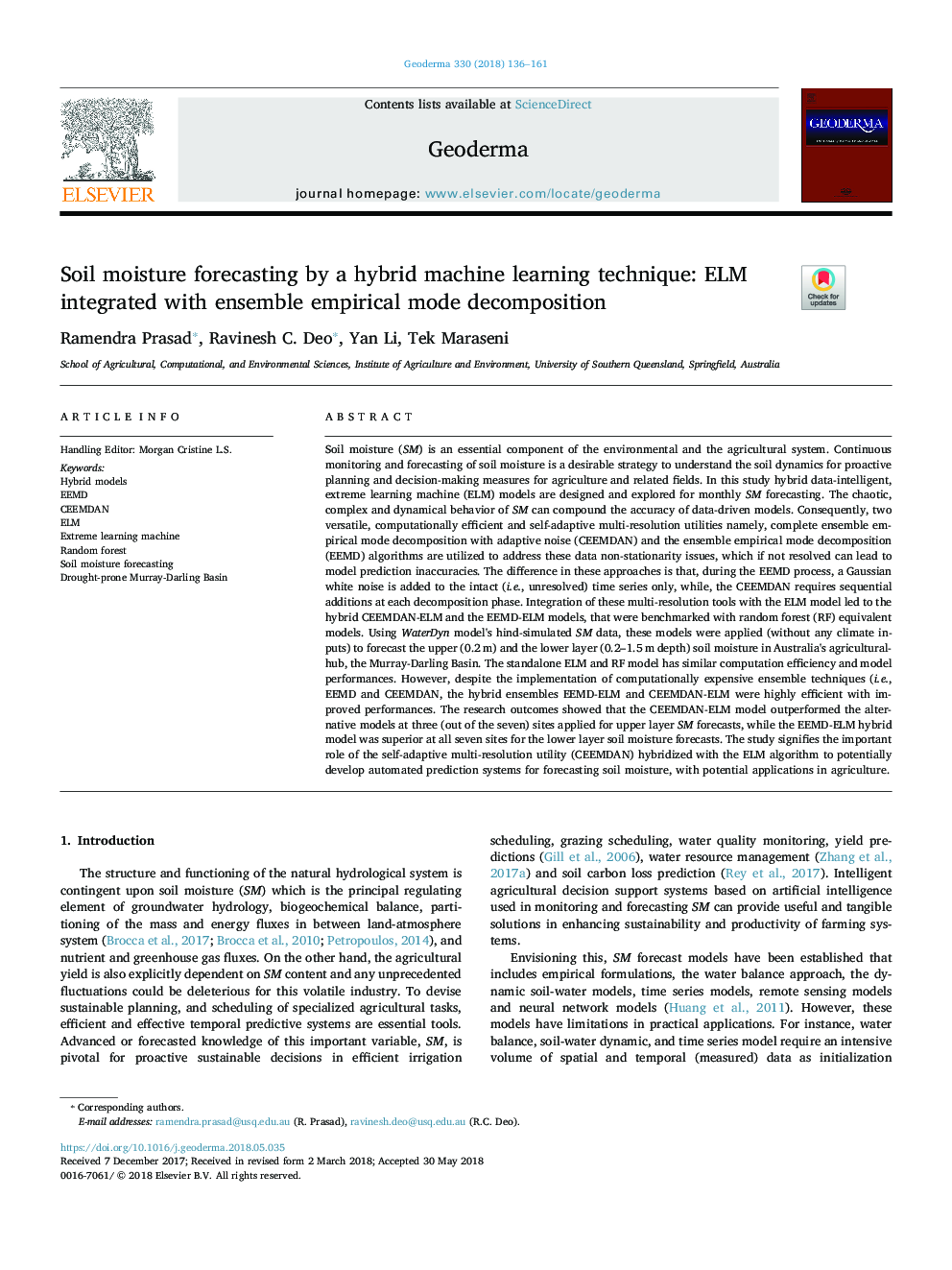| Article ID | Journal | Published Year | Pages | File Type |
|---|---|---|---|---|
| 8893913 | Geoderma | 2018 | 26 Pages |
Abstract
Soil moisture (SM) is an essential component of the environmental and the agricultural system. Continuous monitoring and forecasting of soil moisture is a desirable strategy to understand the soil dynamics for proactive planning and decision-making measures for agriculture and related fields. In this study hybrid data-intelligent, extreme learning machine (ELM) models are designed and explored for monthly SM forecasting. The chaotic, complex and dynamical behavior of SM can compound the accuracy of data-driven models. Consequently, two versatile, computationally efficient and self-adaptive multi-resolution utilities namely, complete ensemble empirical mode decomposition with adaptive noise (CEEMDAN) and the ensemble empirical mode decomposition (EEMD) algorithms are utilized to address these data non-stationarity issues, which if not resolved can lead to model prediction inaccuracies. The difference in these approaches is that, during the EEMD process, a Gaussian white noise is added to the intact (i.e., unresolved) time series only, while, the CEEMDAN requires sequential additions at each decomposition phase. Integration of these multi-resolution tools with the ELM model led to the hybrid CEEMDAN-ELM and the EEMD-ELM models, that were benchmarked with random forest (RF) equivalent models. Using WaterDyn model's hind-simulated SM data, these models were applied (without any climate inputs) to forecast the upper (0.2â¯m) and the lower layer (0.2-1.5â¯m depth) soil moisture in Australia's agricultural-hub, the Murray-Darling Basin. The standalone ELM and RF model has similar computation efficiency and model performances. However, despite the implementation of computationally expensive ensemble techniques (i.e., EEMD and CEEMDAN, the hybrid ensembles EEMD-ELM and CEEMDAN-ELM were highly efficient with improved performances. The research outcomes showed that the CEEMDAN-ELM model outperformed the alternative models at three (out of the seven) sites applied for upper layer SM forecasts, while the EEMD-ELM hybrid model was superior at all seven sites for the lower layer soil moisture forecasts. The study signifies the important role of the self-adaptive multi-resolution utility (CEEMDAN) hybridized with the ELM algorithm to potentially develop automated prediction systems for forecasting soil moisture, with potential applications in agriculture.
Related Topics
Physical Sciences and Engineering
Earth and Planetary Sciences
Earth-Surface Processes
Authors
Ramendra Prasad, Ravinesh C. Deo, Yan Li, Tek Maraseni,
